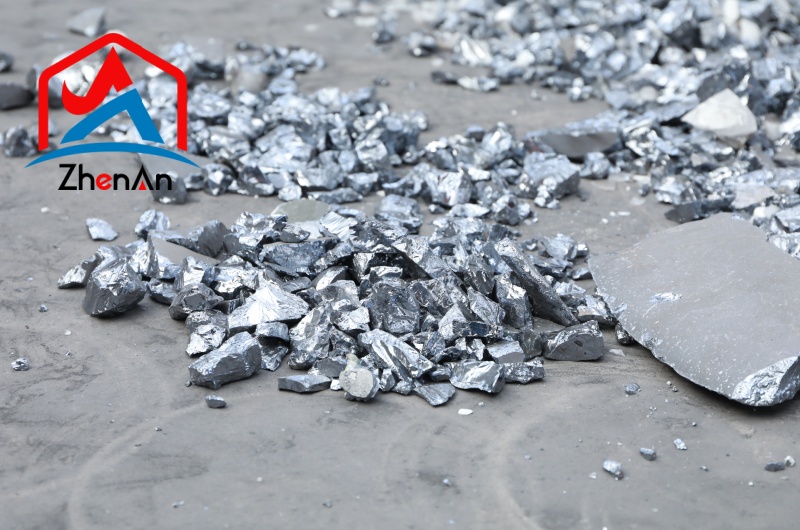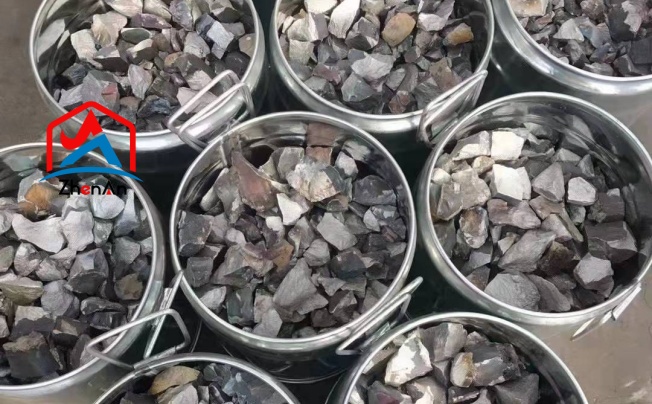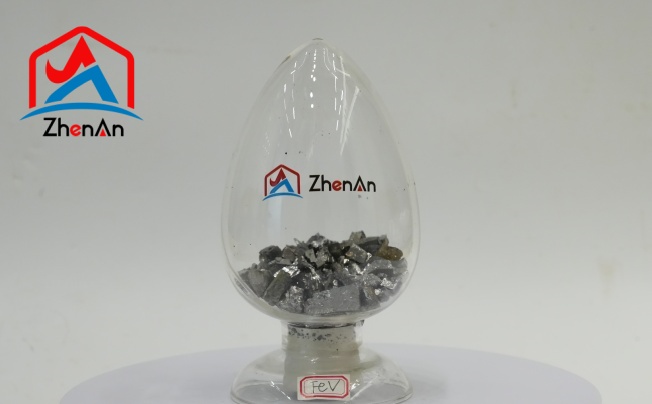BY  GENN
GENN
2024/03
Blog
What Are The Factors Affecting Ferrotitanium Recycling?
What Is Ferrotitanium?
Ferrotitanium is an iron and titanium alloy with a typical titanium content of 15% to 45%. used in the steelmaking process as a steel cleaner. Titanium is important for deoxidation, desulphurization, and denitrification in the steelmaking process because of its high reactivity with sulphur, carbon, oxygen, and nitrogen. This reactivity allows titanium to produce insoluble compounds and sequester them in the slag. Steel becomes a metal with a finer grain structure when titanium is added. Ferrotitanium models include 30, 40, 70, etc.
Iron and titanium scrap can be combined to create ferrotitanium, which is then melted in an induction furnace. In order to improve the strength, hardness, and resistance to corrosion of steel and cast iron, it is also added throughout the production process. Furthermore, because ferro titanium may enhance a product’s performance at high temperatures, it finds application in the automotive, aerospace, and construction industries.
In addition, ferrotitanium powder is well-known for its application in pyrotechnic compositions. Additionally, it is employed in the creation of alloys to boost their machining capabilities and resistance to wear. Ferro titanium is frequently used in tool and stainless steels in the steel industry, where it strengthens, boosts mechanical characteristics, and improves corrosion resistance.
Overall, because of its special qualities and reactivity with other elements, ferrotitanium is essential to the manufacturing of alloys, steel, and other industrial applications.
What Are the Factors Affecting Ferrotitanium Recycling?
- Raw Material Factors
The smelting impact improves with increased rutile and titanium concentrate quality. Placer ore has a superior smelting effect than primary ore when the grade of rutile is above 90% and the grade of titanium concentrate is above 50%. The better the economic and technical indicators and the better the roasting effect prior to smelting, the higher the ratio of ferrous oxide to iron oxide in ilmenite concentrate. Both rutile and ilmenite concentrate should have the proper particle sizes. The loss will rise if it is too fine and easy to fly, while the recovery rate will drop if it is too coarse and the thermite reaction is insufficient. Consequently, it is often possible to control the rutile and ilmenite concentrate particle sizes at 100–160 mesh. between 40 and 100 mesh. It is recommended to maintain a titanium concentration-to-rutile ratio of around 3.5:1. Generally, the temperature range for roasting is 750°C to 850°C, and the roasting process takes three to five hours. The unit thermal effect and the completion of the reduction reaction will be impacted by an inadequate roasting temperature and an excessively short roasting duration, both of which will negatively impact the recovery rate.
- Unit Thermal Effect
The heat of the charge’s chemical reaction is one of the elements influencing the unit thermal effect. The actual heat is added to the charge. Whereas the roasting temperature of rutile and ilmenite concentrate determines the physical heat, the grade and batching quantity of ingredients like rutile, potassium chlorate, and aluminium particles control the chemical reaction’s heat. Production experience reveals low unit calorific value, difficult to-continue reduction reaction, poor slag fluidity, numerous metal balls containing titanium in the slag, difficult separation of slag and iron, and a low amount of iron produced; high unit calorific value, intense reaction, and agitated slag resulting in splashing, significant process losses, and low output.
- Coefficient of Allocation
Experiments have shown that the rate of titanium recovery increases as the amount of aluminium increases. However, an excess of aluminium will thicken the slag, reduce the unit heat effect of the reaction, and easily lead to an alloy aluminium content that is higher than required, which will lower the quality of the finished product. Therefore, the amount of aluminium needs to be regulated within an ideal range to achieve a better titanium recovery rate.
- Rate of Feeding
“Slow first, fast in the middle, and slow at the end” is the ideal approach to feeding. The main material should be added gradually once the base material responds and begins to add it. The feeding rate ought to be raised following the expansion of the molten pool. The reaction should be uniformly fast at the right speed. In the later stages of the reaction, the speed should be reduced to avoid an excessive reaction that could splash. Iron tapping volume increases, iron particle settling is facilitated, and heat concentration is enhanced by appropriate feeding speed. Based on production experience, it is reasonable to limit the total charge into the furnace to 8T and the unloading duration to 9–12 minutes.
- Enhanced Substances
Another name for the refining substance is a precipitant. In order to facilitate the easy separation of the ferrotitanium metal particles from the slag, the refining material is added with the intention of raising the temperature and improving the fluidity of the slag. The slag layer is penetrated from top to bottom by the molten iron droplets produced by the reaction of the refining material. The titanium recovery rate can be increased by introducing metal beads with reduced specific gravity and higher titanium content into the molten pool while they are suspended in the slag layer.
- The time for slag discharge and furnace removal
After smelting is finished, furnace removal time and slag discharge should be carefully monitored. After sedation for 5 to 8 minutes, the slag should be released, and the furnace shell can be removed after 12 hours of cooling. In the event that the sedation period is too brief, the iron has not fully settled. Overly short cooling times result in partially formed iron that can leak when removed from the furnace and titanium that is more easily oxidised at high temperatures, increasing losses.












